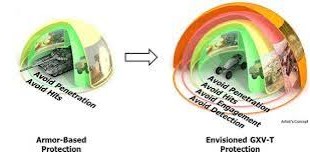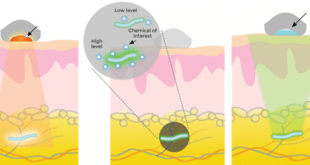A submarine is a naval platform that can stay underwater for an extended period to carry out missions, both offensive and defensive. It is a complex platform that includes multiple components. As radio waves cannot propagate in water, communication with submarines is difficult. To overcome this issue, submarines are being …
Read More »Facial recognition widely employed in commercial, Security and Military applications
Facial recognition is a way of using software to determine the similarity between two face images in order to evaluate a claim. The technology is used for a variety of purposes, from signing a user into their phone to searching for a particular person in a database of photos. …
Read More »Next-generation In-Vehicle Networking
Advances in automotive design have led to an exponential increase in vehicle electronics. Today’s vehicle design improvements are due in large part to the application of electronics to automotive systems. Vehicle functions are divided into systems and sub-systems to provide for passenger entertainment, comfort, and safety, as well as to …
Read More »Future armored vehicles will have enhanced lethality, survivability, situation awareness, mobility and signature management
The effectiveness of anti-tank weapons used by Ukraine against Russian tanks revives old questions as well as generates new ones about armoured fighting vehicles and their future. Oryx, an open-source site tracking military-equipment losses around the world, has reported that Moscow has lost 5,020 military vehicles since the beginning of its …
Read More »After 5G, now 6G research race to satisfy Military’s growing requirements to gather, analyze, and share information rapidly
With every generation of communications technology, the focus of the network changes. The 2G and 3G eras centered on human-to-human communication through voice and text. 4G heralded a fundamental shift to the massive consumption of data, while the 5G era has turned its focus on connecting the Internet of Things …
Read More »Cyber Threats Targeting Food and Agriculture Sector (FA) and Cyber Security
Throughout much of the world, food and beverage safety and security is a high priority. Concomitantly, the economics, societal robustness, and security implications of agriculture, foodstuffs and beverages are massive. Extensive quality measures are in place to prevent and mitigate threats from manifesting; outbreak and contamination detection and response systems …
Read More »High Value Targeting (HVT) Against Insurgents and Terrorists
A high-payoff target, also known as an HPT, is a high-value target whose loss to the enemy will significantly contribute to the success of a friendly course of action. Also called HVT, the loss of high-value targets would be expected to seriously degrade important enemy functions throughout the friendly commander’s area of interest. The term has been widely used in the news media for Osama Bin Laden and …
Read More »Next-gen spaceflight computing Radiation hardened Processors
The advances in space demand next generation of space data and signal processing requirements High speed computers enable on-board image processing capability reduce the amount of bandwidth required to downlink the enormous images associated with emerging sensor developments. Onboard processing allows a complete image to be down linked directly to …
Read More »Implantable Biosensors for Soldier’s health monitoring, diagnosis, and disease treatments
Biosensors, that is sensors that can detect parameters in a living being, are becoming more and more effective in several respects: detecting more and more parameters, becoming more and more sensitive, being able to co-exist for long period of time with the hosting organism to the point of becoming an …
Read More »Ramjet Powered Artillery Round can penetrate anti-access/area denial networks
One of the major lessons from Ukraine’s artillery war is that the side that can shoot farthest dominates the battlefield. According to the report, Russian howitzers are expending 20,000 shells daily on average, compared to 6,000 fired by Ukraine. The ratio for rocket artillery and ballistic-missile launches is even worse. …
Read More » International Defense Security & Technology Your trusted Source for News, Research and Analysis
International Defense Security & Technology Your trusted Source for News, Research and Analysis




